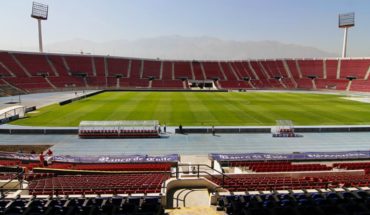No one knew the term bioeconomy 20 years ago. Today, many countries are moving towards better use of resources.
Lawyer and economist Christian Patermann is one of the founders of bioeconomy as a research concept. As head of the European Commission’s Directorate-General for Research, he introduced bioeconomy into EU research framework programmes.
Patermann was a founding member of the German Bioeconomy Council, created by the Federal Ministry of Education and Research in 2009, and is an honorary doctor of the Faculty of Agriculture of the University of Bonn.
Bioeconomy is the theme of the 2020 Scientific Year selected by the German Ministry of Research. Why does bioeconomy affect us all?
The effects of bioeconomics implementation affect us all, can have a significant impact on our future and can deliver concrete results for our children and grandchildren. With more than 7 billion people, we find limits on planet Earth. The challenges will only get worse in the coming decades, when there are about 10 billion people who have to feed, they need heated apartments and ways to make a living. For this reason, bioeconomics is important, but I am clear that almost no one knows what to do with it.
Then explain it to us…
The core of bioeconomy is the use of so-called biological resources: these are animals (such as insects), plants and microorganisms.
It was important to us that science has understood better and more certain properties and abilities of living organisms that differentiate biological resources from fossil and mineral resources: all biological resources are renewable. They have the potential to have a more neutral effect on the climate.
Biological resources can be reused, degraded and then used again. The element of the circular economy is inherent in biological resources. There is no such thing as coal.
Most interestingly, the use of biological resources gives products and substances new functions that are different and often better than conventional materials.
For example?
There are surface coatings for streets that have a longer lifespan and are more robust because biologically obtained components have been added. Others are more weatherproof. There are processes that use less water. Certain products that are not toxic or carcinogenic may be made.
Despite bioeconomy, fossil raw materials will continue to play a role for a long time, says Dr. Chrstian Patermann.
To what extent have your considerations been implemented?
Within a few years, the principle of research became a political concept. More than 60 countries in the world on all continents already have their own bioeconomy strategies, roadmaps, action plans, etc. The number is growing steadily.
We also realized that there are a wide range of side effects if you focus on biological resources and integrate their use into an economic system. For example, different scientific disciplines have to work much more closely than before. Knowledge itself, its production through new technologies, plays a much more relevant role than before.
There were significant challenges, both for research and implementation, but also for education and training. Agriculture, industry, research and politics should now think and act on cycles, develop value chains, and implement them sustainably.
Bioeconomy is therefore a response to the challenges of the world’s growing population and climate change. But there is also strong competition for agricultural resources, between human food, animal food and fuel generation. And we’ll have to see if we can still afford to leave something for real nature, areas that aren’t even used for bioeconomics.
From the beginning, we never act to offer THE solution. We’ve always said that bioeconomy is not a magic wand. But it can support sustainability very strongly and sometimes even make it possible.
We’ve always believed that we would probably need coal and oil for many decades. It may go back, but bioeconomy never set out to completely replace these other resources. That would be impossible.
Biomass is not only what I have in the first generation as animals, plants or microorganisms in the countryside, in the forest or in the ocean, but also in particular waste. These are treasures that can be processed, recycled or processed in higher quality products using biological principles, enzymes in biorefineries or organic factories.
There is no bioeconomy as such, but many different bioeconomies. This depends on the raw materials a country has, its capabilities and potential, its infrastructure, including logistics. That varies a lot from country to country. However, the time has come for the multiple scientific knowledge of our biological resources to be poured into a general social and economic system.
What has to happen for organic farming to become truly economical?
The market plays a crucial role. Now there are hardly any free markets left. The energy market is not at all free, and many other submarkets are also heavily regulated. However, bioeconomics need to move and test itself in markets.
There is, for example, an organic apple producer who can only use its waste as food for chickens or for composting. However, with the help of enzymes, it could also produce from them certain acids that are an essential part of special eye drops. This acid can cost 70 euros per gram. Doing so adds incredible value to the disposal of apples. That shows that even in niches you can get enormous added value.
Politicians could give a real boost to the bioeconomy if, for example, in public procurement, in the ingest of conditions, it was ordered to buy biological products instead of fossil products.
The interview was conducted by Fabian Schmidt





